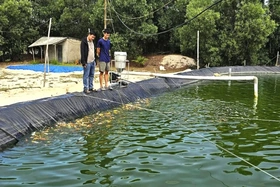4buFecSp4buLdOG6oOG7jcOKw4pjw6zhurg1w73hur7huqDDucOsZjLhu4Dhu43Dg3jhu4s14bq8w73hu4vDiuG6vsO54bq4w4rhu4vhu4Dhurjhu4vDuXd3xILhurzhur7hu4vhur7EguG7i+G6uOG6vMO5w4rDueG6vMSow7nhu4t4w73hu43Dg+G6vuG7i3TEgkt0xILhuqJz4buLxIJMw4rhur7DueG6vOG7hS95xKlm4buF4bq44buLdOG6oOG7jcOKw4pjw6zhurhZw7nhu411w6xmVcO5w4rhurjDveG6vsO54buLw73hur7DiuG7i+G6uOG6vMO5dMO9w4rDueG7i8OKdMO9w7nDg+G6vsO9d8O9dOG7i8OD4buN4bqiw7nDquG7i+G6oMSCdOG7jeG6oOG7i3fDvcOKecO54bq84bqiw7nDg+G7i3TEguG6ouG6osSCw4PhuqBM4buL4bq8w7l3w7nhurzhu4vhur7EguG7i+G6vnnDueG7i3jDveG7jcOD4bq+4buLdMSCS3TEguG6onPhu4vEgkzDiuG6vsO54bq84buL4buNw4rhu4vhur55w7nhu4vigJzDgMO9w4N44buLxIJMw4rhur7DueG6vMOq4oCd4buLw4rDvXjDg8O9d0zDvcODeOG7i8O94bq+w4rhu4vhur7EguG6uC3Dg8SC4bq+dHnhu4vhurrhu4Dhu43huqDDveG6vkzDquG7i8OK4buAw73hur7hu41z4bqgw7nhu4t3xILhurzhu4t04bq84buNd+G6vsO9w4N44buLdcO54bqgw710w73EguG7gMOK4buLdcO9w4p5w7nDiuG7i+G6vMO5w4rDueG6vMSow7l14buLd8SC4bq84buLw4rhurjDuXTDveG7jeG6oOG7i8SCdHThu43DisO9xILDg8OK4bq/4buLMcO54bq8eeG7jeG6uMOK4buLd8SC4bq84buL4bq+ecO9w4rhu4vhurzDueG7jcOKxILDg8Oq4buL4bq+ecO9w4rhu4vEgkzDiuG6vsO54bq84buLw4rhurjDuXTDvcO5w4rhu4vDvcOK4buLw7lL4bq+w7nDg8OKw73EqMO54bqgTOG7i8OKxILhu4B4eeG6vuG7i+G7jXfhur7DueG6vOG7i+G7jcODdeG7i3nhu43hurzEqMO5w4rhur7DuXXhu4vDvcOD4buL4bq+ecO54buLVMSCw4Phu4tUxILhu4vDncOK4bqg4buNw4N14buLJeG7jeG6vMO9w4PDueG7izPDucOKw7nhurzEqMO54bq/4buLw53Dg+G7i+G6vnnDvcOK4buLdMSCw4Phur7DuUvhur7DquG7i3TEgsODw4rDueG6vMSo4buN4bq+w73EgsOD4buL4buNw4N14buL4bqi4buNw4Phu414w7nhuqLDucOD4bq+w6rhu4t0xILhu4DhurjhuqDDuXXhu4tKw73hur554buLw4rhu4DDiuG6vuG7jcO9w4Phu41z4bqgw7nhu4t54buN4bq8xKjDucOK4bq+w73Dg3jhu4vEgnfhu4vhur55w7nhu4t4w73hu43Dg+G6vuG7i3TEgkt0xILhuqJz4buLxIJMw4rhur7DueG6vMOq4buLc8O5dMSC4bqiw7nhu4vDveG6ouG6uMO54bq84buN4bq+w73EqMO54bq/4buFL+G6uGbhu4Xhurjhu4t04bqg4buNw4rDimPDrOG6uFPEgnVMw6xm4buFw73huqJ44buLdOG6oOG7jcOKw4pjw6zDvVTDucOD4bq+w7nhurzDrOG7i8OK4bq8dGPDrHnhur7hur7hurjDiuG6uy8vdOG6v3Phu43EguG6uuG7gOG7jcODeOG6vuG6vMO94bq/xKjDgy91w7nDisOA4bq+xILhurgvw4PDuUrDii9qbOG7icOyL8SpxKlsdW1qxKlrw7PEqWrhur7DsmvDs8Oy4bqg4buJLXptxKnDsm9ua2rEqcSp4buJ4buJa8SpLeG7iW53w7J04bq/SsO5c+G6uMOs4buL4buN4bqg4bq+Y8OsMuG7gOG7jcODeOG7izXhurzDveG7i8OK4bq+w7nhurjDiuG7i+G7gOG6uOG7i8O5d3fEguG6vOG6vuG7i+G6vsSC4buL4bq44bq8w7nDisO54bq8xKjDueG7i3jDveG7jcOD4bq+4buLdMSCS3TEguG6onPhu4vEgkzDiuG6vsO54bq8w6zhu4svZuG7hS/hurhm4buF4bq44buLdOG6oOG7jcOKw4pjw6zhurhU4buN4bq44bq+w73EgsODw6xmV8O9w4p5w7nhurzhuqLDucOD4buLxILDg+G7i1TEgsOD4buLVMSC4buLw53DiuG6oOG7jcODdeG7i8O5w4N44buNeMO54buLw73Dg+G7i3nhu43hurzEqMO5w4rhur7DvcODeOG7i3jDveG7jcOD4bq+4buLdMSCS3TEguG6onPhu4vEgkzDiuG6vsO54bq8w4rhur/hu4st4buLMXnEguG6vsSC4bq74buLUzIkPVM14buFL+G6uGbhu4Xhurjhu4t04bqg4buNw4rDimPDrOG6uFPEgnVMw6xm4buFw4rhur7hurzEgsODeGY1ecO54buLw73DiuG6oOG7jcODdeKAmcOK4buLw4rhurjDuXTDveG7jeG6oOG6vkzhu4Uvw4rhur7hurzEgsODeGbhu4Uv4bq4ZuG7heG6uOG7i3ThuqDhu43DisOKY8Os4bq4U8SCdUzDrGZXxILhurzhu4vhuqLhu43Dg0zhu4vhur7EguG7gOG6vMO9w4rhur7DisOq4buLxKjDvcOKw73hur7DvcODeOG7i1TEgsOD4buLVMSC4buLw53DiuG6oOG7jcODdeG7i0rDveG6vnnEguG7gOG6vuG7i8OK4buNxKjEguG6vMO9w4N44buL4bq+ecO54buLeMO94buNw4Phur7hu4t0xIJLdMSC4bqic+G7i8SCTMOK4bq+w7nhurzhu4t1w73Dinnhu4vDvcOK4buLdMSCw4PDisO9dcO54bq8w7l14buLw73Dg3TEguG6ouG6uOG6oMO54bq+w7nhur/hu4s1ecO54buLw4p0w73DucOD4bq+w713w7104buLw4Phu43huqLDueG7i3fEguG6vOG7i+G6vnnDueG7i3jDveG7jcOD4bq+4buLdMSCS3TEguG6onPhu4vEgkzDiuG6vsO54bq84buLw73DiuG7i1lMxILhur7DvcOKw4rhu43hu4t5TMSC4bq+w73DiuG7iyTDvcODw4Phu43DueG7gMOKw6rhu4vEqW9tw7Phur/hu4tZxIJKw7nEqMO54bq8w6rhu4vhuqDEgnThu43huqDhu4t3w73DinnDueG6vOG6osO5w4Phu4t0xILhuqLhuqLEgsOD4bqgTOG7i+G6vMO5d8O54bq84buL4bq+xILhu4vhur55w73DiuG7i8OK4bq4w7l0w73DucOK4buL4buNw4rhu4vhur55w7nhu4vigJzDgMO9w4N44buLxIJMw4rhur7DueG6vMOq4oCd4buLw7nhuqLhurh54buNw4rDvXrDvcODeOG7i8O94bq+w4rhu4vhur7EguG6uC3hurrhu4Dhu43huqDDveG6vkzhu4vDiuG7gMO94bq+4buNc+G6oMO54buLd8SC4bq84buL4bq44bq8w7nhurjhu43hurzDvcODeOG7i3XDueG6oMO9dMO9xILhu4DDisOq4buLw4Phu4Dhur7hurzDvcO5w4Phur4t4bq8w710eeG7i+G6osO54buN4bqgw4rhu4vhur554buN4bq+4buL4bqi4buNw4NM4buLSsO9w4p54buL4bq+xILhu4vDuUvhurjDueG6vMO9w7nDg3TDueG7i+G7jeG6vuG7i+G6oMO54buNw4rhur7hu4vEgsODdMO54bq/4buFL+G6uGbhu4Xhurjhu4t04bqg4buNw4rDimPDrOG6uFPEgnVMw6xmVeG6vMO9xKjDucOD4buLc0zhu4vhur55w7nhu4t1w7nhuqLhu43Dg3Xhu4t34bq8xILhuqLhu4vhur7EguG7gOG6vMO9w4rhur7DisOq4buL4bq+ecO54buLeeG7jeG6vMSow7nDiuG6vsO9w4N44buLxIJ34buLeMO94buNw4Phur7hu4t0xIJLdMSC4bqic+G7i8SCTMOK4bq+w7nhurzDiuG7i8O9w4Phu4vhur55w7nhu4tUxILDg+G7i1TEguG7i8Odw4rhuqDhu43Dg3Xhu4sl4buN4bq8w73Dg8O54buLM8O5w4rDueG6vMSow7nhu4vDvcOK4buL4bq64buAw73hur7DueG7i+G6uOG6vMO5xKjhu43huqDDucOD4bq+4bq/4buLNUzhurjDvXThu43huqDhuqBMw6rhu4t3w73DinnDueG6vOG6osO5w4Phu4vDucODeOG7jXjDueG7i8O9w4Phu4t54buN4bq8xKjDucOK4bq+w73Dg3jhu4vhur55w73DiuG7i8OK4bq4w7l0w73DucOK4buLd+G6vMSC4bqi4buLJeG7jeG6vHR54buL4bq+xILhu4s0w7nhurjhur7DueG6onPDueG6vOG7i8O54buNdHnhu4tMw7nhu43hurzhur/hu4s1ecO54buL4bq44bq8w73huqLhu43hurxM4buLeeG7jeG6vMSow7nDiuG6vsO9w4N44buL4buN4bq8w7nhu43hu4vDvcOK4buL4bq+ecO54buL4buNdeG6osO9w4PDvcOK4bq+4bq84buN4bq+w73EqMO54buLw4rDueG6vMSow710w7nhu4t6xILDg8O54buLSsO94bq+ecO9w4Phu4vhur55w7nhu4tUxILDg+G7i1TEguG7i8Odw4rhuqDhu43Dg3Xhu4sl4buN4bq8w73Dg8O54buLM8O5w4rDueG6vMSow7nhur/hu4s1xILhu4t54buN4bq8xKjDucOK4bq+4buLeMO94buNw4Phur7hu4t0xIJLdMSC4bqic+G7i8SCTMOK4bq+w7nhurzDisOq4buL4bqgxIJ04buN4bqgw4rhu4vEgnfhur7DucOD4buL4buAw4rDueG7i8OK4bqi4buN4bqg4bqg4buLSsSCxIJ1w7nDg+G7i3PEguG7jeG6vsOKw6rhu4t0xILhuqLhurjEgsOKw73hur7DueG7i3PEguG7jeG6vsOKw6rhu4vDueG6uuG7gMO94bq44bq4w7l14buLSsO94bq+eeG7i8OzLcSpauG7i1kx4buLdcO9w7nDisO54bqg4buLw7nDg3jDvcODw7nDiuG7i+G6vsSC4buL4bq8w7nhu410eeG7i+G6vnnDueG7i3nhu41zw73hur7hu43hur7DiuG7i8SCd+G7i+G6vnnDvcOK4buLxIJMw4rhur7DueG6vOG7i8OK4bq4w7l0w73DucOK4bq/4buLNXnDueG7i3jDveG7jcOD4bq+4buLdMSCS3TEguG6onPhu4vEgkzDiuG6vsO54bq8w4rhu4vhu43hurzDueG7i+G7gMOK4buA4buN4bqg4bqgTOG7i3nhu43hurzEqMO5w4rhur7DuXXhu4vhuqLhu43Dg+G7gOG7jeG6oOG6oEzhu4vEguG6vOG7i+G7gMOKw73Dg3jhu4vhur7EgsSC4bqgw4rhu4vDiuG7gHR54buL4buNw4rhu4vDiuG6ouG7jeG6oOG6oOG7i3nhu43huqLhuqLDueG6vMOKw6rhu4t0ecO9w4rDueG6oMOKw6rhu4vEguG6vOG7i3XDvcSow73Dg3jhu4vDgMODw73EqMO5w4rhur/hu4Uv4bq4ZuG7heG6uOG7i3ThuqDhu43DisOKY8Os4bq4U8SCdUzDrGbhu4x0dMSC4bq8dcO9w4N44buL4bq+xILhu4vDvcODd8SC4bq84bqi4buN4bq+w73EgsOD4buLd+G6vMSC4bqi4buL4bq+ecO54buLJeG7jcOD4buNeMO54bqiw7nDg+G6vuG7i1PEguG7jeG6vHXhu4vEgnfhu4vhur55w7nhu4tUxILDg+G7i1TEguG7i8Odw4rhuqDhu43Dg3Xhu4sl4buN4bq8w73Dg8O54buLM8O5w4rDueG6vMSow7nDquG7i3jDveG7jcOD4bq+4buLdMSCS3TEguG6onPhu4vEgkzDiuG6vsO54bq8w4rhu4vhu43hurzDueG7i+G6uOG6vMO94bqi4buN4bq8w73huqBM4buLeeG7jeG6vMSow7nDiuG6vsO5deG7i+G6vsSC4buL4bqiw7nDueG6vuG7i+G6vnnDueG7i3Thu4DhuqDDvcOD4buN4bq8TOG7i3XDueG6ouG7jcODdcOK4buLxILDg+G7i1TEgsOD4buLVMSC4buLw53DiuG6oOG7jcODdeG6v+G7i+G7jHV1w73hur7DvcSCw4Phu43huqDhuqBMw6rhu4vhu43hu4vDiuG6ouG7jeG6oOG6oOG7i+G6uMSC4bq84bq+w73EgsOD4buLxIJ34buL4bq+ecO9w4rhu4vEgkzDiuG6vsO54bq84buLw4rhurjDuXTDvcO5w4rhu4vDvcOK4buL4bq+4bq84buNw4PDiuG6uMSC4bq84bq+w7l14buL4bq+xILhu4vhur55w7nhu4vhuqLhu43DvcOD4bqg4buNw4N14buLd8SC4bq84buLdMSCw4PDiuG7gOG6ouG6uOG6vsO9xILDg+G7i+G7jcOK4buLeMO9d+G6vsOK4bq/4buLw53Dg+G7i2rhu4lqa8Oq4buL4bq+ecO54buLw7nDiuG6vsO94bqi4buN4bq+w7l14buLeeG7jeG6vMSow7nDiuG6vuG7i8SCd+G7i3jDveG7jcOD4bq+4buLdMSCS3TEguG6onPhu4vEgkzDiuG6vsO54bq8w4rhu4tK4buNw4rhu4vhu43hurzEguG7gMODdeG7i8Ozw6rhu4nhu4nhu4nhu4vDvcODdcO9xKjDvXXhu4Dhu43huqDDisOq4buLw7nhurrhu4DDvcSo4buN4bqgw7nDg+G6vuG7i+G6vsSC4buL4buN4bq44bq44bq8xIJLw73huqLhu43hur7DueG6oEzhu4vEqW7hu4vhur7EgsODw4rhur/hu4vDmeG7jXR54buL4bqgw73EqMO54buLxIJMw4rhur7DueG6vOG7i8O9w4rhu4vDisSC4bqgdeG7i3NM4buLd8O9w4p5w7nhurzhuqLDucOD4buL4bq+xILhu4vDvcOK4bqg4buNw4N14buL4bq8w7nDiuG6vuG7jeG7gOG6vOG7jcOD4bq+w4rhu4vhu43hur7hu4vhurjhurzDvXTDucOK4buL4bq84buNw4N4w73Dg3jhu4t34bq8xILhuqLhu4vhurEqVWptw6rhu4nhu4nhu4nhu4vhur7EguG7i+G6sSpVbG3DquG7ieG7ieG7ieG7i+G7hzY0ZMSpLcSp4bq/w7Nr4buD4buL4bq4w7nhurzhu4vEgkzDiuG6vsO54bq84bq/4buL4buMd+G6vsO54bq84buL4bq44buA4bq8dHnhu43DisO9w4N44buLd+G6vMSC4bqi4buLd8O9w4p5w7nhurzhuqLDucODw6rhu4vhurjhurzEgnTDucOKw4rDvcODeOG7i+G7jcODdeG7i3XDvcODw73Dg3jhu4vDucOK4bq+4buNc+G6oMO9w4p54bqiw7nDg+G6vsOK4buLw4rDueG6vMSow7nhu4vhur7EguG7gOG6vMO9w4rhur7DiuG7i+G7jeG6vuG7i+G6uOG6vMO9dMO5w4rhu4vhurzhu43Dg3jDvcODeOG7i3fhurzEguG6ouG7i+G6sSpVb+G7icOq4buJ4buJ4buJ4buL4bq+xILhu4vEqeG7ieG7icOq4buJ4buJ4buJ4buL4buHZGrhur/Ds2wtbOG6v+G7iW7hu4Phu4vhurjDueG6vOG7i+G6oMO9xKjDueG7i8SCTMOK4bq+w7nhurzDquG7i3TEgsODw4rhur7DveG6vuG7gOG6vsO9w4N44buLxILEqMO54bq84buLbeG7icSR4buLxIJ34buL4bq+ecO54buLw4rDueG6vuG7i+G6osO54buN4bqg4buL4bq44bq8w710w7nDiuG7i3fEguG6vOG7i+G6vsSC4buA4bq8w73DiuG6vsOK4bq/4buFL+G6uGbhu4Xhurjhu4t04bqg4buNw4rDimPDrOG6uFPEgnVMw6xm4buFw73huqJ44buLdOG6oOG7jcOKw4pjw6zDvVTDucOD4bq+w7nhurzDrOG7i8OK4bq8dGPDrHnhur7hur7hurjDiuG6uy8vdOG6v3Phu43EguG6uuG7gOG7jcODeOG6vuG6vMO94bq/xKjDgy91w7nDisOA4bq+xILhurgvw4PDuUrDii9qbOG7icOyL8SpxKlsdW1qxKlrw7Nrw7Phur5uxKnDs2rhuqDhu4kt4bq64buA4buNw4N4LXnDvcO54bq4LXnhu43hu4AtauG6v0rDuXPhurjDrOG7i+G7jeG6oOG6vmPDrDLhu4Dhu43Dg3jhu4s14bq8w73hu4vDiuG6vsO54bq4w4rhu4vhu4Dhurjhu4vDuXd3xILhurzhur7hu4vhur7EguG7i+G6uOG6vMO5w4rDueG6vMSow7nhu4t4w73hu43Dg+G6vuG7i3TEgkt0xILhuqJz4buLxIJMw4rhur7DueG6vMOs4buLL2bhu4Uv4bq4ZuG7heG6uOG7i3ThuqDhu43DisOKY8Os4bq4VOG7jeG6uOG6vsO9xILDg8OsZljDveG7jcOD4bq+4buLdMSCS3TEguG6onPhu4vEgkzDiuG6vsO54bq8w4rhu4t54buN4bq8xKjDucOK4bq+w7l14buLw73Dg+G7i+G6vnnDueG7i1TEgsOD4buLVMSC4buLw53DiuG6oOG7jcODdeG7iyXhu43hurzDvcODw7nhu4tUxILDg8OKw7nhurzEqOG7jeG6vsO9xILDg+G7i+G7jOG6vMO54buN4buL4buN4bq8w7nhu4vEgnfhu4vDisO9eMODw713w7104buNw4Phur7hu4vDisO9esO54buL4buNw4N14buLecSC4bqgdeG7i3nDvXh54buLw7l0xILDg8SC4bqiw7104buLxKjhu43huqDhu4DDueG6v+G7iy3hu4sxecSC4bq+xILhurvhu4s14bq/JOG7hS/hurhm4buF4bq44buLdOG6oOG7jcOKw4pjw6zhurhTxIJ1TMOsZuG7hcOK4bq+4bq8xILDg3hmV8SCdOG7gMOKw73Dg3jhu4vEgsOD4buLdMSCw4PDisO54bq8xKjhu43hur7DvcSCw4Phu4vDuXd3xILhurzhur7hu4Uvw4rhur7hurzEgsODeGbhu4Uv4bq4ZuG7heG6uOG7i3ThuqDhu43DisOKY8Os4bq4U8SCdUzDrGYkw7nhu411w7nhurzDinnDveG6uOG7i+G7jeG6vuG7i+G6vnnDueG7iyXhu43Dg+G7jXjDueG6osO5w4Phur7hu4tTxILhu43hurx14buLxIJ34buL4bq+ecO54buLVMSCw4Phu4tUxILhu4vDncOK4bqg4buNw4N14buLJeG7jeG6vMO9w4PDueG7izPDucOKw7nhurzEqMO54buLw7nhuqLhurh54buNw4rDvXrDucOK4buL4bq+eeG7jeG6vuG7i+G7jeG6osSCw4N44buL4bq+ecO54buLdcO9w4rhur7hurzDvXPhu4Dhur7DuXXhu4vDiuG6uMO5dMO9w7nDiuG7i8O9w4Phu4vhur55w7nhu4vhurzDucOKw7nhurzEqMO5w6rhu4t4w73hu43Dg+G6vuG7i3TEgkt0xILhuqJz4buLxIJMw4rhur7DueG6vMOK4buL4buN4bq8w7nhu4t5w714eeG6oEzhu4t1w73DiuG6vsO9w4N04bq+w73EqMO54buL4buNw4N14buLw7l0xILDg8SC4bqiw7104buN4bqg4bqgTOG7i8So4buN4bqg4buA4buNc+G6oMO54bq/4buFL+G6uGbhu4Xhurjhu4t04bqg4buNw4rDimPDrOG6uFPEgnVMw6xmNXnDvcOK4buLc8O9xKjhu43huqDEqMO54buL4bqixILhuqDhuqDhu4DDisOA4buLc8O54bqgxILDg3jDiuG7i+G6vsSC4buL4bq+ecO54buLdOG6oOG7jcOKw4rhu4vEgnfhu4vDisSCd+G6vi1zxIJ1w73DuXXhu4vhu43Dg8O94bqi4buN4bqgw4rDquG7i0rDveG6vnnhu4vhur5KxILhu4vDinnDueG6oOG6oOG7i3nhu43huqDEqMO5w4rDquG7i+G7jcODdeG7i3nhu43DiuG7i+G7jeG7i+G6oOG7jeG6vHjDueG7i3PEgnVM4buLw4rDvXrDueG6v+G7izV5w7nhu4vhuqLDueG7jeG6vuG7i8SCd+G7i+G6vnnDueG7i3jDveG7jcOD4bq+4buLdMSCS3TEguG6onPhu4vEgkzDiuG6vsO54bq84buLw73DiuG7i3nDvXh54bqgTOG7i8OD4buA4bq+4bq8w73hur7DvcSC4buAw4rDquG7i0rDveG6vnnhu4vDucOK4bq+w73huqLhu43hur7DuXXhu4vhurjhurzEguG6vsO5w73Dg+G7i3TEgsOD4bq+w7nDg+G6vuG7i8O9w4Phu4vhur55w7nhu4vhuqLDueG7jeG6vuG7i+G6vOG7jcODeMO9w4N44buLd+G6vMSC4bqi4buLbm/hur/Ds8SR4buL4bq+xILhu4vDs8Oy4bq/bsSR4bq/4buLNXnDvcOK4buLw73DiuG7i+G6vnnDueG7i+G6ouG7jcO9w4Phu4vhurzDueG7jcOKxILDg+G7i0p5TOG7i+G6ouG7jcODTOG7i+G6uMO5xILhurjhuqDDueG7i8OKw7nDucOA4buL4bq+xILhu4vhurjhu4Dhurx0eeG7jcOKw7nhu4vDveG6vsOq4buLdcO5w4rhurjDveG6vsO54buLw73hur7DiuG7i+G6vMO54bqg4buN4bq+w73EqMO54bqgTOG7i3nDvXh54buL4bq44bq8w710w7nhur/hu4Uv4bq4ZuG7heG6uOG7i3ThuqDhu43DisOKY8Os4bq4U8SCdUzDrGZX4bq8xILhuqLhu4tq4buJxKlv4buL4bq+xILhu4vhur55w7nhu4vhurjhurzDucOKw7nDg+G6vsOq4buLeMO94buNw4Phur7hu4t0xIJLdMSC4bqic+G7i8SCTMOK4bq+w7nhurzDiuG7i3nhu43EqMO54buLc8O5w7nDg+G7i8O5S+G6vsO5w4PDisO9xKjDueG6oEzhu4t54buN4bq8xKjDucOK4bq+w7l14buLd8SC4bq84buL4bq+ecO54buL4bq44bq8w7nhurjhu43hurzhu43hur7DvcSCw4Phu4vEgnfhu4vEqOG7jeG6vMO9xILhu4DDiuG7i3XDvcOKecO5w4rhu4t04buN4bq+w7nhurzDvcODeOG7i+G6vsSC4buL4bq+xILhu4DhurzDvcOK4bq+w4rhu4vEqMO9w4rDveG6vsO9w4N44buLVMSCw4Phu4tUxILhu4vDncOK4bqg4buNw4N14bq/4buLNXnDueG7i8O9w4N04bq8w7nhu43DisO9w4N44buLdcO54bqi4buNw4N14buLd8SC4bq84buL4bq+ecO9w4rhu4vEgkzDiuG6vsO54bq84buLw4rhurjDuXTDvcO5w4rhu4t54buNw4rhu4vhuqDDuXXhu4vhur7EguG7i+G7jcOD4buLw7lL4bq44buNw4PDisO9xILDg+G7i8SCd+G7i3nhu43hurzEqMO5w4rhur7DvcODeOG7i+G7jeG6vMO54buNw4rhu4tzTOG7i+G6oMSCdOG7jeG6oOG7i3fDvcOKecO54bq84bqiw7nDg+G6v+G7izV5w73DiuG7i3nhu43DiuG7i3ThurzDueG7jeG6vsO5deG7i8OKw714w4PDvXfDvXThu43Dg+G6vuG7i+G6uOG6vMO5w4rDiuG7gOG6vMO54buLxILDg+G7i+G6vnnDueG7i+G6ouG7jcOD4buNeMO54bqiw7nDg+G6vuG7i+G7jcODdeG7i3TEgsODw4rDueG6vMSo4buN4bq+w73EgsOD4buLw7l3d8SC4bq84bq+w4rDquG7i+G6uMSC4bq+w7nDg+G6vsO94buN4bqg4bqgTOG7i+G6oMO54buNdcO9w4N44buL4bq+xILhu4vhur55w7nhu4t1w7nhurjhuqDDueG6vsO9xILDg+G7i8SCd+G7i3jDveG7jcOD4bq+4buLdMSCS3TEguG6onPhu4vEgkzDiuG6vsO54bq8w4rhur/hu4vhurfDveG6vnnEguG7gOG6vuG7i+G6vsO94bqiw7nhuqBM4buL4bqi4buNw4Phu414w7nhuqLDucOD4bq+4buL4bqiw7nhu43DiuG7gOG6vMO5w4rDquG7i+G6vnnDvcOK4buLw4rhurjDuXTDvcO5w4rhu4t0xILhu4DhuqB14buLc8O5dMSC4bqiw7nhu4vDinThu43hurx0w7nhu4vEguG6vOG7i8O5xKjDucOD4buLd+G7jXTDueG7i8O5S+G6vsO9w4N04bq+w73EgsOD4bq/4buFL+G6uGbhu4Xhurjhu4t04bqg4buNw4rDimPDrOG6uFPEgnVMw6xmV+G7jXTDvcODeOG7i+G6vnnDvcOK4buL4bq8w7nhu43huqDDveG6vkzDquG7i+G6vnnDueG7i3XDucSow7nhuqDEguG6uOG6osO5w4Phur7hu4vEgnfhu4vhuqLhu43Dg+G7jXjDueG6osO5w4Phur7hu4vhu43Dg3Xhu4vDiuG7gMOK4bq+4buNw73Dg+G7jXPhuqDDueG7i3nhu43hurzEqMO5w4rhur7DvcODeOG7i8OKxILhuqDhu4Dhur7DvcSCw4PDiuG7i3fEguG6vOG7i3jDveG7jcOD4bq+4buLdMSCS3TEguG6onPhu4vEgkzDiuG6vsO54bq8w4rhu4vDvcOD4buL4bq+ecO54buLVMSCw4Phu4tUxILhu4vDncOK4bqg4buNw4N14buLJeG7jeG6vMO9w4PDueG7izPDucOKw7nhurzEqMO54buLw73DiuG7i3Thurzhu4B0w73hu43huqDhur/hu4tZxIJKw7nEqMO54bq8w6rhu4vDveG6vuKAmcOK4buLw4PEguG6vsO5SsSC4bq84bq+eUzhu4vhur554buN4bq+w6rhu4vhur7EguG7i3Xhu43hur7DucOq4buL4bq+ecO54bq8w7nhu4t54buNw4rhu4tzw7nDucOD4buL4bqgw73huqLDveG6vsO5deG7i+G6vMO5w4rDueG7jeG6vHR54buL4buNw4N14buLw4rhu4DhurzEqMO5TMOK4buLxILDg+G7i3jDveG7jcOD4bq+4buLdMSCS3TEguG6onPhu4vEgkzDiuG6vsO54bq8w4rhu4vDvcOD4buL4bq+ecO54buL4bq8w7nDisO54bq8xKjDucOq4buLw7nDiuG6uMO5dMO94buN4bqg4bqgTOG7i+G6vMO5eOG7jeG6vHXDvcODeOG7i+G6vnnDucO94bq84buLeeG7jeG6vMSow7nDiuG6vsO9w4N44buLw4rhur7hu43hur7hu4DDiuG7i+G7jcODdeG7i3XDvcOK4bq+4bq8w71z4buA4bq+w73EgsOD4bq/4buLNXnDueG6vMO5d8SC4bq8w7nDquG7i+G6vMO54bqgw7nEqOG7jcOD4bq+4buL4buN4buA4bq+ecSC4bq8w73hur7DvcO5w4rhu4t34buNdMO54buLdHnhu43huqDhuqDDucODeMO5w4rhu4vDvcOD4buL4buNw4rDisO5w4rDisO9w4N44buL4bq+ecO54buL4bq8w7nDisSC4buA4bq8dMO54buLw4rhur7hu43hur7hu4DDisOq4buLw73Dg3ThuqDhu4B1w73Dg3jhu4t1w7nDg8OKw73hur5Mw6rhu4vhurzDucOKw7nhurzEqMO5w4rDquG7i3nhu43hurzEqMO5w4rhur7hu4vEqMSC4bqg4buA4bqiw7nDisOq4buLdcO9w4rhur7hurzDvXPhu4Dhur7DvcSCw4Phu4vhurjhu43hur7hur7DueG6vMODw4rDquG7i8O54bq+dOG6v8Oq4buLd8SC4bq84buLeMO94buNw4Phur7hu4t0xIJLdMSC4bqic+G7i8SCTMOK4bq+w7nhurzDiuG6v+G7hS/hurhm4buF4bq44buLdOG6oOG7jcOKw4pjw6zhurhTxIJ1TMOsZuG7hcO94bqieOG7i3ThuqDhu43DisOKY8Osw71Uw7nDg+G6vsO54bq8w6zhu4vDiuG6vHRjw6x54bq+4bq+4bq4w4rhursvL3Thur9z4buNxILhurrhu4Dhu43Dg3jhur7hurzDveG6v8Sow4MvdcO5w4rDgOG6vsSC4bq4L8ODw7lKw4ovamzhu4nDsi/EqcSpbHVtasSpa8Oy4buJbOG6vmxrbm7huqDDsi3hurrhu4Dhu43Dg3gtecO9w7nhurgteeG7jeG7gC3EqeG6v0rDuXPhurjDrOG7i+G7jeG6oOG6vmPDrDLhu4Dhu43Dg3jhu4s14bq8w73hu4vDiuG6vsO54bq4w4rhu4vhu4Dhurjhu4vDuXd3xILhurzhur7hu4vhur7EguG7i+G6uOG6vMO5w4rDueG6vMSow7nhu4t4w73hu43Dg+G6vuG7i3TEgkt0xILhuqJz4buLxIJMw4rhur7DueG6vMOs4buLL2bhu4Uv4bq4ZuG7heG6uOG7i3ThuqDhu43DisOKY8Os4bq4VOG7jeG6uOG6vsO9xILDg8OsZiZ3d8O9dMO94buN4bqgw4rhu4t34bq8xILhuqLhu4vhur55w7nhu4sl4buNw4Phu414w7nhuqLDucOD4bq+4buLU8SC4buN4bq8deG7i8SCd+G7i+G6vnnDueG7i1TEgsOD4buLVMSC4buLw53DiuG6oOG7jcODdeG7iyXhu43hurzDvcODw7nhu4tUxILDg8OKw7nhurzEqOG7jeG6vsO9xILDg+G7i+G7jOG6vMO54buN4buLw73Dg8OK4bq4w7l04bq+4buL4bq+ecO54buLw4rhur7hu43hur7hu4DDiuG7i8SCd+G7i3jDveG7jcOD4bq+4buLdMSCS3TEguG6onPhu4vEgkzDiuG6vsO54bq8w4rDquG7i3TEguG6vOG7jeG6oMOq4buL4buNw4N14buLxKjhu43hurzDvcSC4buAw4rhu4vDisO54buNc8O5deG7i8SC4bq8eOG7jcODw73DiuG6osOK4bq/4buLLeG7izF5xILhur7EguG6u+G7i1MyJD1TNeG7hS/hurhm4buF4bq44buLdOG6oOG7jcOKw4pjw6zhurhTxIJ1TMOsZjPDuXTEgnjDg8O9esO9w4N44buL4bq+ecO9w4rhu4vDvcOKw4rhu4DDucOq4buLw4rhur7hu43hurzhur7DvcODeOG7i3fhurzEguG6ouG7iyPhu43Dg+G7gOG7jeG6vEzhu4tq4buJamvDquG7i1XDueG6uOG7gOG6vkzhu4tVw73hurzDuXThur7EguG6vOG7i8SCd+G7i+G6vnnDueG7iyXhu43Dg+G7jXjDueG6osO5w4Phur7hu4tTxILhu43hurx14buLxIJ34buL4bq+ecO54buLVMSCw4Phu4tUxILhu4vDncOK4bqg4buNw4N14buLJeG7jeG6vMO9w4PDueG7izPDucOKw7nhurzEqMO5w6rhu4s14bq84buNw4Phu4s9eeG7gMSCw4N44buLVOG7jcODecOq4buL4buNw4N14buLecO9w4rhu4t0xILhuqDhuqDDueG7jXjhu4DDucOK4buLeeG7jcSow7nhu4t0xILDg3Xhu4B04bq+w7l14buL4buN4buL4bq8w7nDisO54buN4bq8dHnhu4vhurjhurzEgsOBw7l04bq+4buLw4rhurjDuXTDvXfDvXThu43huqDhuqBM4buLxILDg+G7i3jDveG7jcOD4bq+4buLdMSCS3TEguG6onPhu4vEgkzDiuG6vsO54bq8w4rhur/hu4s1ecO54buLw4rhur7hu4B1TOG7i3fEgnThu4DDisO5w4rhu4vEgsOD4buLw7nEqOG7jeG6oOG7gOG7jeG6vsO9w4N44buL4bq+ecO54buLdcO9w4rhur7hurzDvXPhu4Dhur7DvcSCw4Phu4vhu43Dg3Xhu4t54buN4bq8xKjDucOK4bq+w73Dg3jhu4vDiuG6vuG7jeG6vuG7gMOK4buLxIJ34buL4bq+ecO9w4rhu4vEgkzDiuG6vsO54bq84buLw4rhurjDuXTDvcO5w4rhur/hu4Uv4bq4ZuG7heG6uOG7i3ThuqDhu43DisOKY8Os4bq4U8SCdUzDrGY1ecO54buL4bq8w7nDisO54buN4bq8dHnhu4vhur7DueG7jeG6ouG7i3fEguG7gMODdeG7i+G6vnnhu43hur7hu4vhur55w7nhu4t1w7nDg8OKw73hur5M4buLxIJ34buLeMO94buNw4Phur7hu4t0xIJLdMSC4bqic+G7i8SCTMOK4bq+w7nhurzDiuG7i8O9w4Phu4vhur55w7nhu4vhuqLhu43hurzDvcODw7nhu4vhu43hurzDueG7jcOK4buL4bqi4buNw4Phu414w7l14buLc0zhu4vhur55w7nhu4tUxILDg+G7i1TEguG7i8Odw4rhuqDhu43Dg3Xhu4sl4buN4bq8w73Dg8O54buLM8O5w4rDueG6vMSow7nhu4vDvcOK4buL4bq8w7nhuqDhu43hur7DvcSow7nhuqBM4buLecO9eHnDquG7i+G7jcSow7nhurzhu414w73Dg3jhu4vhu4nhur/EqWvhu4vDvcODdcO9xKjDvXXhu4Dhu43huqDDii/huqJq4bq/4buLWeG7jeG6vMSow7nDiuG6vsO5deG7i3jDveG7jcOD4bq+4buLdMSCS3TEguG6onPhu4vEgkzDiuG6vsO54bq8w4rhu4vDvcOD4buL4bq+ecO54buL4bqi4buN4bq8w73Dg8O54buL4buN4bq8w7nhu43DiuG7i+G6ouG7jcOD4buNeMO5deG7i3NM4buL4bq+ecO54buL4bq8w7nDisO54bq8xKjDueG7i3nhu43EqMO54buL4buNw4Phu4vhu43EqMO54bq84buNeMO54buLSsO5w714eeG6vuG7i8SCd+G7i+G7jeG6uOG6uOG6vMSCS8O94bqi4buN4bq+w7nhuqBM4buLxKnhur/Dsmzhu4vDgHgvw73Dg3XDvcSow7114buA4buN4bqg4buL4buNw4N14buL4buNw4Phu4vhu43EqMO54bq84buNeMO54buL4bqgw7nDg3jhur554buLxIJ34buL4buN4bq8xILhu4DDg3Xhu4vEqW7hur9v4buLdOG6ouG6v+G7hS/hurhm4buF4bq44buLdOG6oOG7jcOKw4pjw6zhurhTxIJ1TMOsZsOdw4Phu4vDueG7jXR54buLd+G7gMODdOG6vsO9xILDg+G7jeG6oOG7i3rEgsODw7nDquG7i+G6vnnDueG7i3XDucODw4rDveG6vkzhu4t1w73DiuG6vuG6vMO9c+G7gOG6vsO9xILDg+G7i8SCd+G7i3jDveG7jcOD4bq+4buLdMSCS3TEguG6onPhu4vEgkzDiuG6vsO54bq8w4rhu4vhur7DucODdcOK4buL4bq+xILhu4vDvcODdOG6vMO54buNw4rDueG7i0rDveG6vnnhu4t1w7nhurjhur554bq/4buLM8SCdMOA4buL4buNw4N14buLdMSC4bq84buN4bqg4buLw4rhu4Bzw4rhur7hurzhu43hur7DucOK4buL4buN4bq8w7nhu4vDiuG7gMO94bq+4buNc+G6oMO54buLd8SC4bq84buLeMO94buNw4Phur7hu4t0xIJLdMSC4bqic+G7i8SCTMOK4bq+w7nhurzDiuG6v+G7izV5w7nhu4vDucOK4bq+w73huqLhu43hur7DuXXhu4vDg+G7gOG6onPDueG6vOG7i8SCd+G7i3jDveG7jcOD4bq+4buLdMSCS3TEguG6onPhu4vEgkzDiuG6vsO54bq8w4rhu4tKw73hur554buLw4p5w7nhuqDhuqDhu4vhuqDDucODeOG6vnnDiuG7i8SCd+G7i23hu4t04bqi4buL4buNw4N14buL4buNc8SCxKjDueG7i3XDvcOK4bq+4bq8w71z4buA4bq+w7l14buLw73Dg+G7i+G6vnnDueG7i3fhu4DDg3Thur7DvcSCw4Phu43huqDhu4t6xILDg8O5w4rhu4vEgnfhu4vhur55w7nhu4tUxILDg+G7i1TEguG7i8Odw4rhuqDhu43Dg3Xhu4sl4buN4bq8w73Dg8O54buLM8O5w4rDueG6vMSow7nhu4vDvcOD4buLI+G7gOG6oEzhu4tq4buJamvhu4vDvcOK4buLxILEqMO54bq84buLbeG7i+G6osO94bqg4bqgw73EgsOD4buLw73Dg3XDvcSow7114buA4buN4bqgw4rhur/hu4Uv4bq4ZuG7heG6uOG7i3ThuqDhu43DisOKY8Os4bq4U8SCdUzDrGbhu4XDiuG6vuG6vMSCw4N4ZsOZw4rhur7hu41z4bqgw73DinnDvcODeOG7i3nhu43hurzEqMO5w4rhur7DvcODeOG7i+G6vsO54buN4bqi4buL4buN4buLdOG6vOG7gHTDveG7jeG6oOG7i8OKxILhuqDhu4Dhur7DvcSCw4Phu4Uvw4rhur7hurzEgsODeGbhu4Uv4bq4ZuG7heG6uOG7i3ThuqDhu43DisOKY8Os4bq4U8SCdUzDrGbhu4zDiuG7i+G6vnnDueG7i3XDveG6vMO5dOG6vuG7i8O5S8O5dOG7gOG6vsSC4bq84buLxIJ34buL4bq+ecO54buLw4rhur7hu4B1TMOq4buLVcO54bq44buA4bq+TOG7i1XDveG6vMO5dOG6vsSC4bq84buLVOG7jcODeeG7i8O54bqi4bq4eeG7jcOKw716w7l14buL4bq+eeG7jeG6vuG7i+G6vnnDueG7i3Thu4DhurzhurzDucOD4bq+4buL4bqgw7nEqMO54bqg4buLxIJ34buLeMO94buNw4Phur7hu4t0xIJLdMSC4bqic+G7i8SCTMOK4bq+w7nhurzhu4t54buN4bq8xKjDucOK4bq+w73Dg3jhu4vhur7EguG7i+G6osO5w7nhur7hu4t04buA4bqgw73Dg+G7jeG6vEzhu4t1w7nhuqLhu43Dg3XDiuG7i8SCw4Phu4tUxILDg+G7i1TEguG7i8Odw4rhuqDhu43Dg3Xhu4vhurzDueG6ouG7jcO9w4PDiuG7i0rDveG6vnnDvcOD4buL4buNdHTDueG6uOG6vuG7jXPhuqDDueG7i+G6oMO94bqiw73hur7DiuG7i3TEguG6ouG6uOG7jeG6vMO5deG7i+G6vsSC4buL4bq+ecO54buLw7nDiuG6vsO94bqi4buN4bq+w7l14buL4bq8w7nDisO54bq8xKjDucOK4bq/4buLWcSCSsO5xKjDueG6vMOq4buL4bq8w7l0w7nDg+G6vuG6oEzDquG7i+G6vnnDueG7i8OD4buA4bqic8O54bq84buLxIJ34buLd8O9w4p5w7nhurzhuqLDucOD4buLeeG7jeG6vMSow7nDiuG6vsO9w4N44buL4bq+ecO9w4rhu4vDiuG6uMO5dMO9w7nDiuG7i3fEguG6vOG7i3TEgsODw4rhu4DhuqLhurjhur7DvcSCw4Phu4vEgsOD4buL4bq+ecO54buL4bqi4buNw73Dg+G6oOG7jcODdeG7i3nhu43DiuG7i3PDucO5w4Phu4vEgsOD4buL4bq+ecO54buL4bq8w73DisO54bq/4buLNXnDvcOK4buLeeG7jcOK4buLdOG6vMO54buN4bq+w7l14buLxKjhu43hurzDvcSC4buAw4rhu4vhurjhurzEgnPhuqDDueG6osOKw6rhu4tKw73hur554buL4bq+ecO54buL4bqixILDiuG6vuG7i8ODxILhur7DvXTDueG7jXPhuqDDueG7i3PDucO9w4N44buL4bq+ecO54buL4bq8w7l14buAdOG6vsO9xILDg+G7i8SCd+G7i3jDveG7jcOD4bq+4buLdMSCS3TEguG6onPhu4vEgkzDiuG6vsO54bq84buL4bq8w7nDisSC4buA4bq8dMO5w4rhu4vEgsOD4buLVMSCw4Phu4tUxILhu4vDncOK4bqg4buNw4N14buL4buNw4N14buL4bq+ecO54buLdcO94bqiw73Dg8O9w4p5w73Dg3jhu4vhu4DDg8O94bq64buAw7nhu4t0eeG7jeG6vOG7jXThur7DueG6vMO9w4rhur7DvXTDiuG7i8SCd+G7i+G6vnnDvcOK4buLw4rhurjDuXTDvcO5w4rhu4vEgsOD4buL4bq+ecO54buLw73DiuG6oOG7jcODdeG6v+G7hS/hurhm4buF4bq44buLdOG6oOG7jcOKw4pjw6zhurhTxIJ1TMOsZjXEguG7i+G7jXV14bq8w7nDisOK4buL4bq+ecO9w4rhu4vDisO94bq+4buA4buN4bq+w73EgsODw6rhu4vhu410dMSC4bq8dcO9w4N44buL4bq+xILhu4tUw4N5w6rhu4vhur55w7nhu4vDvcODxKjEguG6oMSow7nhuqLDucOD4bq+4buLxIJ34buL4bq8w7nhuqDDucSo4buNw4Phur7hu4vhu43hu4Dhur55xILhurzDveG6vsO9w7nDiuG7i+G7jeG6vuG7i+G7jeG6oOG6oOG7i+G6oMO5xKjDueG6oMOK4buLw73DiuG7i3Thurzhu4B0w73hu43huqDhur/hu4vDncOD4buL4bq+ecO9w4rhu4vhurzDuXjhu43hurx1w6rhu4vhur55w7nhu4sl4buNw4Phu414w7nhuqLDucOD4bq+4buLU8SC4buN4bq8deG7i8SCd+G7i+G6vnnDueG7i1TEgsOD4buLVMSC4buLw53DiuG6oOG7jcODdeG7iyXhu43hurzDvcODw7nhu4szw7nDisO54bq8xKjDueG7i+G7jcODdeG7i+G6vnnDueG7izHDucSC4bq44bqgw7nigJnDiuG7i1TEguG6ouG6osO94bq+4bq+w7nDueG7i8SCd+G7i1TEgsOD4buLVMSC4buLw53DiuG6oOG7jcODdeG7i8ODw7nDuXXhu4vhur7EguG7i3TEgsSC4bq8dcO9w4Phu43hur7DueG7i8O5d3fDuXThur7DvcSow7nhuqBM4buL4bq+xILhu4vDvcOD4bq+w7l44bq84buN4bq+w7nhu4vhur55w7nhu4t0xILDg8OKw7nhurzEqOG7jeG6vsO9xILDg8Oq4buL4bqi4buNw4Phu414w7nhuqLDucOD4bq+w6rhu4vhu43Dg3Xhu4vDiuG7gMOK4bq+4buNw73Dg+G7jXPhuqDDueG7i3nhu43hurzEqMO5w4rhur7DvcODeOG7i8SCd+G7i3jDveG7jcOD4bq+4buLdMSCS3TEguG6onPhu4vEgkzDiuG6vsO54bq8w4rhur/hu4vDmcOK4bq+4buNc+G6oMO9w4p5w73Dg3jhu4vhu43hu4vDgcSCw73Dg+G6vuG7i+G6ouG7jcOD4buNeMO54bqiw7nDg+G6vuG7i+G7jcODdeG7i3nhu43hurzEqMO5w4rhur7DvcODeOG7i+G6vsO54buN4bqi4buLd8SC4bq84buL4bq+ecO9w4rhu4vEgkzDiuG6vsO54bq84buLw4rhurjDuXTDvcO5w4rhu4t04buNw4Phu4tzw7nhu4t0xILDg8OKw711w7nhurzDuXXhu4vhu43hu4t04bq84buAdMO94buN4bqg4buLw4rEguG6oOG7gOG6vsO9xILDg+G6v+G7hS/hurhm4buF4bq44buLdOG6oOG7jcOKw4pjw6zhurhTxIJ1TMOsZjHhu43hurzhur7DvXTDveG6uOG7jeG6vsO9w4N44buLw73Dg+G7i+G6vnnDvcOK4buL4bq+w7nhu43huqLDquG7i+G6osO54bqic8O54bq8w4rhu4tKw73huqDhuqDhu4tzw7nhu4t4w73EqMO5w4Phu4vhur55w7nhu4vEguG6uOG6uMSC4bq84bq+4buAw4PDveG6vkzhu4vhur7EguG7i3nhu43hurzEqMO5w4rhur7hu4vEgkzDiuG6vsO54bq8w4rhu4vhur7EguG7i+G6osO5w7nhur7hu4vhur55w7nhu4t04buA4bqgw73Dg+G7jeG6vEzhu4vDg8O5w7l1w4rhu4vEgnfhu4vhur7EguG7gOG6vMO9w4rhur7DiuG7i3XDveG6vMO5dOG6vuG6oEzhu4vEgsOD4buL4bq+ecO54buLw73DiuG6oOG7jcODdeG6v+G7i1nEgkrDucSow7nhurzDquG7i+G6vnnDuUzhu4vhuqLhu4DDiuG6vuG7i3TEguG6ouG6osO94bq+4buL4bq+xILhu4vDiuG6vuG6vMO9dOG6vuG6oEzhu4vhu411ecO54bq8w73Dg3jhu4vhur7EguG7i+G7jcODdeG7i+G6vMO9eMSC4bq8xILhu4DDiuG6oEzhu4vDveG6ouG6uOG6oMO54bqiw7nDg+G6vsO9w4N44buL4bq8w7l44buA4bqg4buN4bq+w73EgsODw4rhu4vhurzDuXjhu43hurx1w73Dg3jhu4vhur55w7nhu4vhuqLhu41Lw73huqLhu4DhuqLhu4vhu43huqDhuqDEgkrhu41z4bqgw7nhu4t54buN4bq8xKjDucOK4bq+4buLxIJ34buLeMO94buNw4Phur7hu4t0xIJLdMSC4bqic+G7i8SCTMOK4bq+w7nhurzDiuG7i+G6uMO54bq84buLTMO54buN4bq8w6rhu4vhurjDueG6vOG6osO94bq+4bq+w7l14buLeeG7jeG6vMSow7nDiuG6vsO9w4N44buL4buN4bq8w7nhu43DisOq4buLeeG7jeG6vMSow7nDiuG6vsO9w4N44buLw4rDueG7jcOKxILDg8OKw6rhu4t3w73DinnDvcODeOG7i3jDueG7jeG6vMOq4buL4buNw4N14buLeeG7jeG6vMSow7nDiuG6vsO9w4N44buL4bqiw7nhur55xIJ1w4rhur/hu4Uv4bq4ZuG7heG6uOG7i3ThuqDhu43DisOKY8Os4bq4U8SCdUzDrGYzw7nhuqDDucSo4buNw4Phur7hu4vhu43hu4Dhur55xILhurzDveG6vsO9w7nDiuG7i+G7jeG6vuG7i+G7jeG6oOG6oOG7i+G6oMO5xKjDueG6oMOK4buLw4PDucO5deG7i+G6vsSC4buL4buAw4PDvXdM4buL4bq+ecO5w73hurzhu4vEqMO9w7lKw4rhu4vhur7EguG7i+G6osO9w4PDveG6osO9esO54buL4bq+ecO54buLeeG7jeG6vMSow7nDiuG6vsO9w4N44buLxIJ34buLeMO94buNw4Phur7hu4t0xIJLdMSC4bqic+G7i8SCTMOK4bq+w7nhurzDiuG7i3fEguG6vOG7i3TEgsODw4rhu4DhuqLhurjhur7DvcSCw4Phu4vEgsOD4buL4bq+ecO54buL4bqi4buNw73Dg+G6oOG7jcODdeG7i3PDuXThu43hu4DDisO5w6rhu4vDvcODxKjDvcOKw71z4bqgTMOq4buL4bq+ecO9w4rhu4vhurjhurzhu4104bq+w710w7nhu4vhurzhu43hurjDvXXhuqBM4buLdcO54bq44bqgw7nhur7DucOK4buL4bq8w7nDisSC4buA4bq8dMO5w4rhu4vhu43Dg3Xhu4t1w73huqLDvcODw73DinnDucOK4buL4bq+ecO54buL4buAw4PDveG6uuG7gMO54buLdHnhu43hurzhu4104bq+w7nhurzDvcOK4bq+w710w4rhu4vEgnfhu4tUxILDg+G7i1TEguG7i8Odw4rhuqDhu43Dg3Xhur/hu4Uv4bq4ZuG7heG6uOG7i3ThuqDhu43DisOKY8Os4bq4U8SCdUzDrGbDnXfhu4vDveG6ouG6uOG6oMO54bqiw7nDg+G6vsO5deG7i8OKw7nhurzDvcSC4buAw4rhuqBMw6rhu4vDveG6vuG7i8O9w4rhu4tzw7nhuqDDvcO5xKjDuXXhu4vhur554buN4bq+4buL4bq+ecO5w4rDueG7i8OK4bq4w7l0w713w7104buL4bq8w7l44buA4bqg4buN4bq+w73EgsODw4rhu4tKw73huqDhuqDhu4t5w7nhuqDhurjhu4t4w73hu43Dg+G6vuG7i3TEgkt0xILhuqJz4buLxIJMw4rhur7DueG6vMOK4buLeOG6vMSCSuG7i+G7jcODdeG7i3XDucSow7nhuqDEguG6uOG7i8OK4buAw4rhur7hu43DvcOD4buNc+G6oEzhu4vDvcOD4buL4bq+ecO54buLVMSCw4Phu4tUxILhu4vDncOK4bqg4buNw4N14buLJeG7jeG6vMO9w4PDueG7izPDucOKw7nhurzEqMO5w6rhu4t0xILDg+G6vuG6vMO9c+G7gOG6vsO9w4N44buL4bq+xILhu4vhur55w7nhu4t0xILDg8OKw7nhurzEqOG7jeG6vsO9xILDg+G7i8SCd+G7i3PDvcSC4bqgxIJ4w7104buN4bqg4buLdcO9xKjDueG6vMOKw73hur5M4buL4buNw4N14buL4bq84buN4bq8w7nhu4t4w7nDg8O54bq+w7104buL4bq8w7nDisSC4buA4bq8dMO5w4rhur/hu4tUxILDg8OKw7nhurrhu4DDucOD4bq+4bqgTMOq4buLw4rhu4DDiuG6vuG7jcO9w4Phu41z4bqgTOG7i3nhu43hurzEqMO5w4rhur7DuXXhu4t4w73hu43Dg+G6vuG7i3TEgkt0xILhuqJz4buLxIJMw4rhur7DueG6vMOK4buLdOG7jcOD4buL4bq44bqg4buNTOG7i+G7jeG7i+G6vMSC4bqgw7nhu4vDvcOD4buL4bq44bq8xILhuqLEguG6vsO9w4N44buL4bq+ecO54buLdcO5xKjDueG6oMSC4bq44bqiw7nDg+G6vuG7i8SCd+G7i+G6vnnDueG7i+G6vsSC4buA4bq8w73DiuG6ouG7i8OKw7l04bq+xILhurzhu4vDvcOD4buLVMSCw4Phu4tUxILhu4vDncOK4bqg4buNw4N14bq/4buFL+G6uGbhu4Xhurjhu4t04bqg4buNw4rDimPDrOG6uFPEgnVMw6xmNXnDueG7i1TEgsOD4buLVMSC4buLw53DiuG6oOG7jcODdeG7iyXhu43hurzDvcODw7nhu4szw7nDisO54bq8xKjDueG7i8OK4bq44buNw4PDiuG7i+G7jeG7i+G6vsSC4bq+4buN4bqg4buL4buN4bq8w7nhu43hu4vEgnfhu4tsw6pta2rhu4t5w7l04bq+4buN4bq8w7nDisOq4buLdMSC4bqi4bq44bq8w73DisO9w4N44buLbWts4buLecO5dOG6vuG7jeG6vMO5w4rhu4vEgnfhu4vDiuG6vuG6vMO9dOG6vuG6oEzhu4vhurjhurzEguG6vsO5dOG6vsO5deG7i3rEgsODw7nDisOq4buLxKnDqmvDsmrhu4t5w7l04bq+4buN4bq8w7nDiuG7i3fEguG6vOG7i8O5dMSC4bqgxIJ4w7104buN4bqg4buL4bq8w7nDiuG6vsSC4bq84buN4bq+w73EgsODw6rhu4vhu43Dg3Xhu4tqw6prb27hu4t5w7l04bq+4buN4bq8w7nDiuG7i3XDucOKw714w4Phu43hur7DuXXhu4t3xILhurzhu4t1w7nEqMO54bqgxILhurjhuqLDucOD4bq+4bq/4buL4buMdXXDveG6vsO9xILDg+G7jeG6oOG6oEzDquG7i+G6vnnDueG6vMO54buLw73DiuG7i+G7jeG7i3TEguG6ouG6ouG7gMODw73hur5M4buLdcO5xKjDueG6oMSC4bq44bqiw7nDg+G6vuG7i+G7jeG6vMO54buN4buLdMSCxKjDueG6vMO9w4N44buLamvhu4nhu4t5w7l04bq+4buN4bq8w7nDiuG7i+G7h+G6vnnDueG7i8OK4buA4bq8d+G7jXTDueG7i+G7jeG6vMO54buN4buLxIJ34buL4bq+ecO54buLw73DiuG6oOG7jcODdeG7g+G7i+G7jcODdeG7i+G7jeG7i3TEgsODw4rDueG6vMSo4buN4bq+w73EgsOD4buLc8O54bqg4bq+4buLw4rhu4DhurzhurzEguG7gMODdcO9w4N44buL4bq+ecO54buL4bq8w7nDisO54bq8xKjDueG6v+G7izPDuXTEgnjDg8O9esO5deG7i+G7jcOK4buLxILDg8O54buLxIJ34buL4bqxw73DueG6vsOD4buN4bqi4oCZw4rhu4t5w714eeG6oEzhu4t1w73EqMO54bq8w4rDueG7i+G6ouG7jeG6vMO9w4PDueG7i8O5dMSCw4pMw4rhur7DueG6osOKw6rhu4vDveG6vuG7i3fDueG7jeG6vuG7gOG6vMO5w4rhu4vhur5M4bq4w7104buN4bqg4buL4bq+4bq8xILhurjDvXThu43huqDhu4vhuqLhu43hurzDvcODw7nhu4t54buNc8O94bq+4buN4bq+w4rhu4vDiuG7gHR54buL4buNw4rhu4t0xILhurzhu43huqDhu4vhurzDucO5d8OKw6rhu4vDisO54buNSsO5w7l14buLc8O5dcOKw6rhu4vhu43Dg3Xhu4vEqOG7jeG6vMO9xILhu4DDiuG7i3fDvcOKeeG7i8OK4bq4w7l0w73DucOK4bq/4buFL+G6uGbhu4Xhurjhu4t04bqg4buNw4rDimPDrOG6uFPEgnVMw6xmNXnhurzEguG7gHh54buLw4rhu4DhurzEqMO5TMOK4buLdMSCw4N14buAdOG6vsO5deG7i8O9w4Phu4vhur55w7nhu4tUxILDg+G7i1TEguG7i8Odw4rhuqDhu43Dg3Xhu4sl4buN4bq8w73Dg8O54buLM8O5w4rDueG6vMSow7nDquG7i+G7jeG7i+G6vsSC4bq+4buN4bqg4buLxIJ34buLw7Jta+G7i+G6ouG7jeG6vMO9w4PDueG7i8OK4bq4w7l0w73DucOK4buLeeG7jcSow7nhu4tzw7nDucOD4buLdcSCdOG7gOG6osO5w4Phur7DuXXDquG7i8O9w4N04bqg4buAdcO9w4N44buLxKlra+G7i8OK4bq4w7l0w73DucOK4buLxIJ34buL4bqi4buN4bq8w73Dg8O54buL4bq44bqg4buNw4Phur7DisOq4buLw7Jv4buLw4rhurjDuXTDvcO5w4rhu4vEgnfhu4vhuqLhu43hurzDvcODw7nhu4vhu43Dg8O94bqi4buN4bqgw4rDquG7i8Spa27hu4t0xILhurzhu43huqDhu4vDiuG6uMO5dMO9w7nDiuG7i+G7h3TEguG6ouG6uOG6vMO9w4rDvcODeOG7i8SpxKlr4buLeeG7jeG6vHXhu4t0xILhurzhu43huqDhu4vDiuG6uMO5dMO9w7nDiuG7i+G7jcODdeG7i2pr4buLw4rEgnfhur7hu4t0xILhurzhu43huqDhu4vDiuG6uMO5dMO9w7nDiuG7g8Oq4buLxKnDs2rhu4vhurzDucO5d+G7i3fDvcOKeeG7i8OK4bq4w7l0w73DucOKw6rhu4vhu43Dg3Xhu4tr4buJauG7i3PDucOD4bq+ecO9dOG7i8OK4bq4w7l0w73DucOK4buL4buHw73Dg3ThuqDhu4B1w73Dg3jhu4vEqcOzbuG7i8OKxIJ34bq+LXPEgnXDvcO5deG7i+G7jcODw73huqLhu43huqDDisOq4buLbMOy4buLw7l0ecO9w4PEgnXDueG6vOG6osOKw6rhu4tsw7Phu4vhu43hurzhur554bq8xILhurjEgnXDisOq4buL4buNw4N14buLxKnDsuG7i8OKw7l44bqiw7nDg+G6vsO5deG7i0rEguG6vOG6osOK4buD4bq/4buL4buMdXXDveG6vsO9xILDg+G7jeG6oOG6oEzDquG7i+G6vnnDueG6vMO54buL4buN4bq8w7nhu4vDsm7hu4vDiuG6uMO5dMO9w7nDiuG7i8SCd+G7i8OKw7nhu41Kw7nDuXXDquG7i8SCw4PDueG7i8OKw7nhu4144bq84buNw4rDiuG7i8OK4bq4w7l0w73DucOKw6rhu4vhu43Dg3Xhu4vDisO9S+G7i+G6ouG7jcODeOG6vMSCxKjDueG7i+G6uOG6oOG7jcOD4bq+4buLw4rhurjDuXTDvcO5w4rhur/hu4vhu4zhuqLEgsODeOG7i+G6vnnDucOKw7nDquG7i8OKw7nEqMO54bq84buN4bqg4buL4bq84buN4bq8w7nhu4vhu43Dg3Xhu4vDuXTEgsODxILhuqLDvXThu43huqDhuqBM4buLxKjhu43huqDhu4Dhu41z4bqgw7nhu4vDisO54buNd8SCxIJ14buLw4rhurjDuXTDvcO5w4rhu4vhu43hurzDueG7i+G6uOG6vMO5w4rDucOD4bq+w6rhu4vDiuG7gHR54buL4buNw4rhu4vhuqDEgnPDiuG6vsO54bq8w6rhu4vhu41z4buN4bqgxILDg8O5w6rhu4vDisO54buN4buLdOG7gHThu4DhuqJzw7nhurzDquG7i8OK4buNSuG6vsSCxILhur554buLxIJMw4rhur7DueG6vMOq4buLeOG6vMO5w7nDgy3huqDDveG6uOG6uMO5deG7i+G6ouG7gMOKw4rDueG6oMOq4buLw4p04buN4bqg4bqgxILhurjDquG7i+G6vuG7gMOD4buNw6rhu4vhuqLhu410w4DDueG6vMO54bqgw6rhu4t04bq84buNc8Oq4buLw4rhurrhu4DDvXXDquG7i+G7jcODdeG7i3nEguG6vMOD4buLdMSC4bq84buN4bqg4bq/4buFL+G6uGbhu4Xhurjhu4t04bqg4buNw4rDimPDrOG6uOG7jOG7gOG6vnnEguG6vMOsZjXhu41M4buLJMSCw4N44buLLeG7iyp4xIJ04buLJeG7jcO94buFL+G6uGY=
Tay Long - Ngoc Mai

{head}
Other news

QTO - In Quang Tri, clean agricultural stores may not flaunt flashy signs or wide storefronts, but they are quietly becoming trusted places where consumers...

QTO - In a quiet village in central Vietnam, Le Minh Duc, 26, has turned his passion for ornamental fish into a promising startup, the first Koi breeding...

